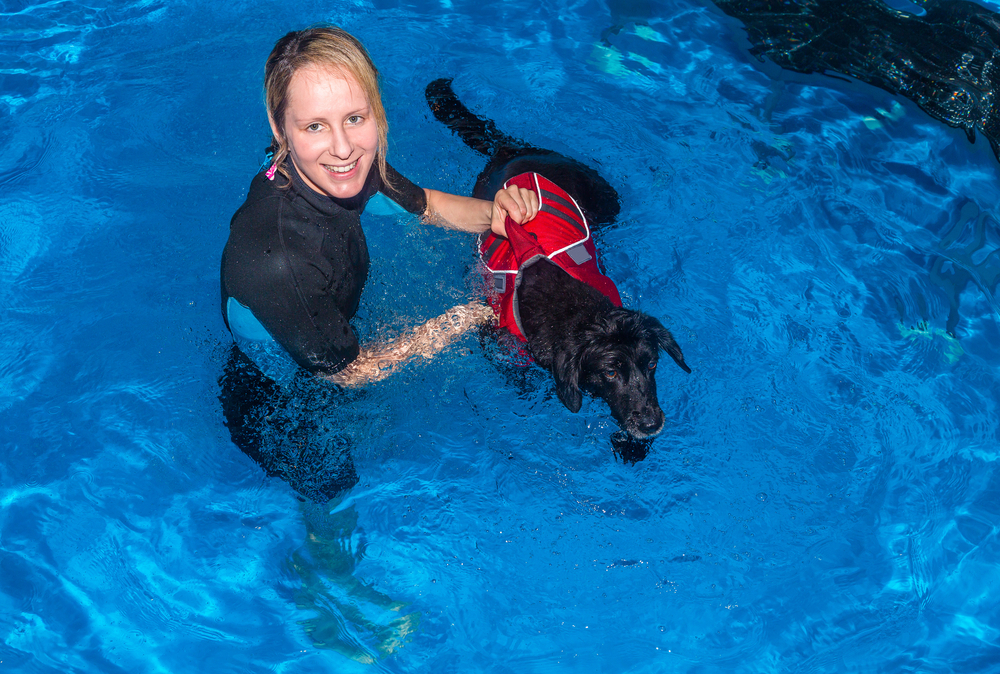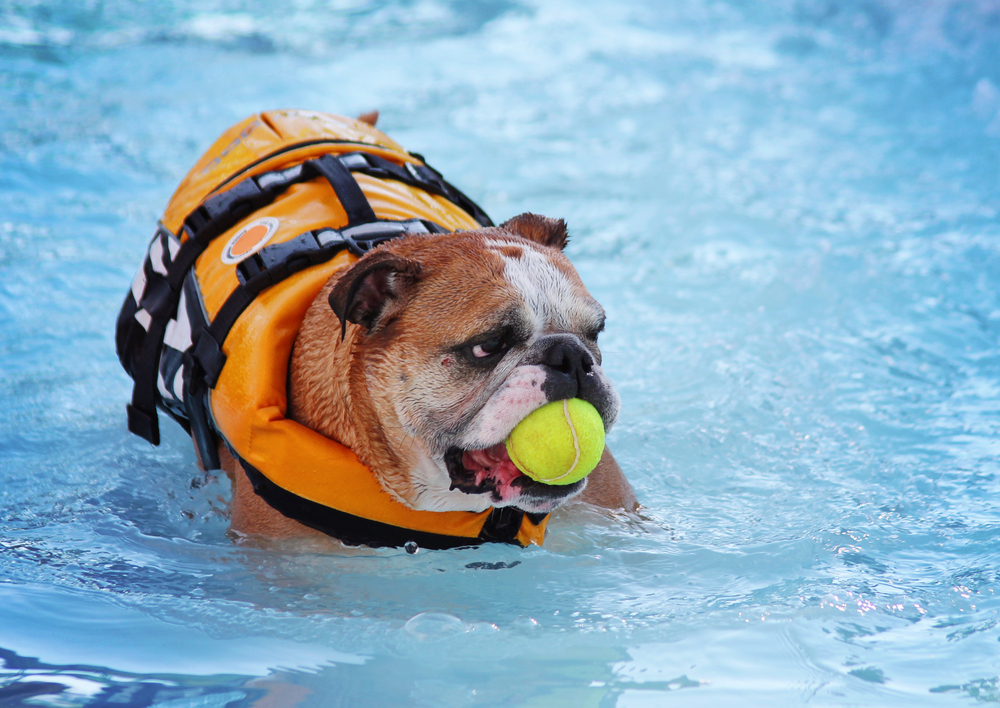How to Educate a Canine to Swim: A Step-by-Step Guide
Introduction
Swimming is a beautiful activity for canines, offering numerous benefits such as exercise, improved joint health, and mental stimulation. However, not all dogs are natural swimmers, and some may even have a fear of water. If your furry friend falls into this category, don’t worry. With proper guidance and patience, you can teach your canine to swim safely and confidently. In this comprehensive guide, we’ll take you through the process step by step, ensuring a positive and enjoyable experience for both you and your canine companion.

Before Tutoring Your Canine to Swim: Follow These Three Water Safety Tips
Before you embark on the journey of teaching your canine to swim, it’s crucial to prioritize their safety. Here are three essential water safety tips to keep in mind:
Wear Appropriate Swim Clothes and Bring a Life Jacket
When you plan to teach your canine to swim, it’s essential to wear appropriate swim clothes yourself. This allows you to enter the water with your furry friend and provide hands-on support. Additionally, invest in a well-fitted canine life jacket or life vest. These specially designed flotation devices keep dogs buoyant in the water, ensuring their safety while they learn to swim and boosting their confidence. Breeds such as French Bulldogs and Boxers should never swim or be near water without a life vest due to their brachial characteristics. Check out our comprehensive guide on canine life jackets to learn more about choosing the right one for your canine companion.
Use a Long-Line Leash
If you plan to teach your canine to swim in a natural water area, it’s recommended to use a long-line leash. This allows you to keep your dog tethered to you while in the water, ensuring their proximity and safety. By using a long-line leash, you can easily guide and control your canine’s movements, providing reassurance and preventing them from venturing too far into deep water.
Find a Canine-Friendly Swimming Location
Choosing the right location for introducing your canine to water is crucial. Canine pools or canine swimming centers are ideal places to start, as they provide a controlled and safe environment. Look for a swimming location that minimizes distractions and has gentle entry points into the water. Natural settings like lakes and ponds should have minimal waves and a gradual slope, which is more comfortable for dogs compared to steep drop-offs. This ensures a positive and stress-free experience for your canine companion.
Time to Introduce Your Canine to Water

Now that you’ve taken the necessary safety precautions, it’s time to introduce your canine to the water. Remember, supervision is vital throughout the entire process. The key to successfully teaching your dog to enjoy swimming is to take it slow and ensure they are having fun. Here’s a step-by-step approach to help you educate your canine to swim safely and confidently:
Step 1: Let Your Canine Explore and Play at the Water’s Edge
Start by allowing your canine to get comfortable and familiar with the water. Let them explore the shallow areas, splash around, and play at the water’s edge. This step is all about getting them acquainted with the sensation of being near water. Praise and reward your canine for any interest and engagement in the water, even if it’s just splashing or wading.
Step 2: Encourage Your Canine to Slowly Move Deeper into the Water
As your canine becomes more comfortable at the water’s edge, encourage them to gradually move deeper into the water. Take it one step at a time and gauge their comfort level. If your canine seems cautious or uncomfortable, gently redirect them back to the shallower areas. It’s essential not to rush this process and let your dog set the pace.
Step 3: Encourage Your Canine into Slightly Deeper Water Using Lots of Praise
Continue encouraging your canine to venture into slightly deeper water, always using praise and positive reinforcement. Introduce floating toys or water-safe toys to engage their interest and keep them focused. The goal is to make the experience enjoyable and build their confidence in the water. Be patient and understanding as your dog adjusts to the new environment.
Step 4: Bait Your Canine Back to Where They Can Exit the Water
Once your canine has experienced swimming in deeper water, teaching them how to exit the water safely is important. Use treats and toys as bait to guide your dog back to an area where they can easily get out of the water. This step is particularly crucial for teaching them pool etiquette, where they need to locate the designated exit ramp or stairs. By familiarizing them with the process of getting out of the water, you ensure their safety and instill important skills.
Step 5: Remain Close and Monitor Your Canine During the Swimming Session
During the entire swimming session, it’s vital to stay close to your canine and keep a watchful eye on them. Even if they are confident swimmers, they may still require breaks or want to return to shallower areas. Swimming can be tiring, especially for dogs that are new to the activity. Make sure to provide opportunities for rest and always encourage them to return to an area where they can comfortably stand. Continuously praise and reward your canine for their efforts, regardless of the distance or duration of their swim. The goal is to create a positive and enjoyable experience for both you and your furry companion.
Canine Swimming Assignments: What to Expect

If you feel uncertain or anxious about teaching your canine to swim, consider enrolling in canine swimming assignments. Many veterinary physical therapy and rehabilitation centers offer recreational swimming programs, and canine pools that host dock-diving events frequently provide introductory swimming sessions for dogs and puppies. These assignments are conducted by trained instructors who stay in the water with your dog, providing valuable guidance and support. Additionally, these facilities often have canine floatation vests available in various sizes, ensuring a secure fit for your canine companion.
Conclusion
Swimming can be a fantastic activity for dogs, providing numerous physical and mental benefits. However, not all dogs are natural swimmers, and it’s important to approach the process of teaching them to swim with patience and care.
By following the step-by-step guide outlined in this article, you can introduce your canine to the water positively and gradually, allowing them to build confidence and enjoy swimming at their own pace. Remember to prioritize safety by utilizing appropriate swim gear, supervising closely, and considering professional assistance if needed. With time and practice, your canine friend may become a confident and enthusiastic swimmer, opening up a world of enjoyment and exercise for both of you.
FAQs
Q: Can all dog breeds learn to swim?
A: While most dogs can learn to swim, some breeds may have more difficulty due to their body structure or coat type. It’s important to be mindful of your dog’s comfort level and provide appropriate support and guidance.
Q: How long does it take to teach a dog to swim?
A: The time it takes to teach a dog to swim can vary depending on the individual dog’s temperament and previous experiences. Some dogs may become comfortable with swimming quickly, while others may require more time and patience.
Q: What if my dog is afraid of the water?
A: If your dog is afraid of the water, it’s crucial to take the process slowly and gradually introduce them to the water using positive reinforcement techniques. Professional guidance from a canine swimming instructor can also be beneficial in such cases.
Q: Can I teach my older dog to swim?
A: Yes, older dogs can learn to swim. However, it’s important to consider their physical limitations and any pre-existing health conditions. Consulting with your veterinarian is recommended before starting swimming lessons with an older dog.



